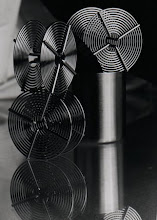 Upper Greeter Creek, cover photo from Moving Mirrors: Intermediate Principles of Landscape Photography with Film.
Upper Greeter Creek, cover photo from Moving Mirrors: Intermediate Principles of Landscape Photography with Film. by John O'Keefe-Odom
AgXphoto.info
We're proud to announce the addition of Moving Mirrors: Intermediate Principles in Landscape Photography with Film to library collections in Tennessee.
Recent acceptances and catalog entries include:
Academic Libraries:
Southern Adventist University, McKee Library.
Chattanooga State, Augusta R. Kolwyck Library.
Motlow State Community College, Clayton-Glass Library, Moore County Campus and Fayetteville Campus.
Public Libraries:
Chattanooga-Hamilton County Public Library (Eastgate branch).
Manchester/Coffee County Public Library. Call number 778.71 OKE.
East Ridge City Library. Call number 770 OKE.
Secondary School:
East Ridge High School Library, one copy for the alma mater.
Many thanks to the Deans and Library Directors who were kind enough to reply with letters of acceptance.
Look for Moving Mirrors in your local library in southeast Tennessee. Some of the books we have donated to almost 20 libraries are still being processed and evaluated. We'll post updates about approvals as they become available.
Moving Mirrors: Intermediate Principles of Landscape Photography with Film is a monograph written, photographed, edited and designed by John O'Keefe-Odom. It is the primary product of a 2009 CreateHere MakeWork Grant.
CreateHere's MakeWork grants were made possible by generous donations from the Lyndhurst and Benwood Foundations. Both organizations are well known throughout the Chattanooga area for their exemplary, multi-millionaire patronage of arts and cultural activities.
Moving Mirrors includes discussions of: original developer recipes, film and darkroom techniques, photographic composition, Boyle's Law, Beer's Law, the Inverse Square Law of Light, Rayleigh Scattering, tonal grouping, tonal shifts and using spectra for editing images.
BISAC Subject codes: PHO023040 (Landscape), PHO006000 (Darkroom) and PHO011030 (monograph).
The book can also be searched for with ISBN 978-0-615-37152-8 or as ISBN 9780615371528.
An online copy of the text in web page format is available at: https://www.agxphoto.info. To login as a visitor and view the content for academic or personal reference use, please respond to password challenges with the Username "guest" and the Password of "agxphoto." Any subsequent updates to the challenge and reply procedure may be noted on our index.html page at www.agxphoto.info. Within the website, the book's content is available in HTML 2.0 with CSS and HTML 4.01 Strict with CSS.
# # #






